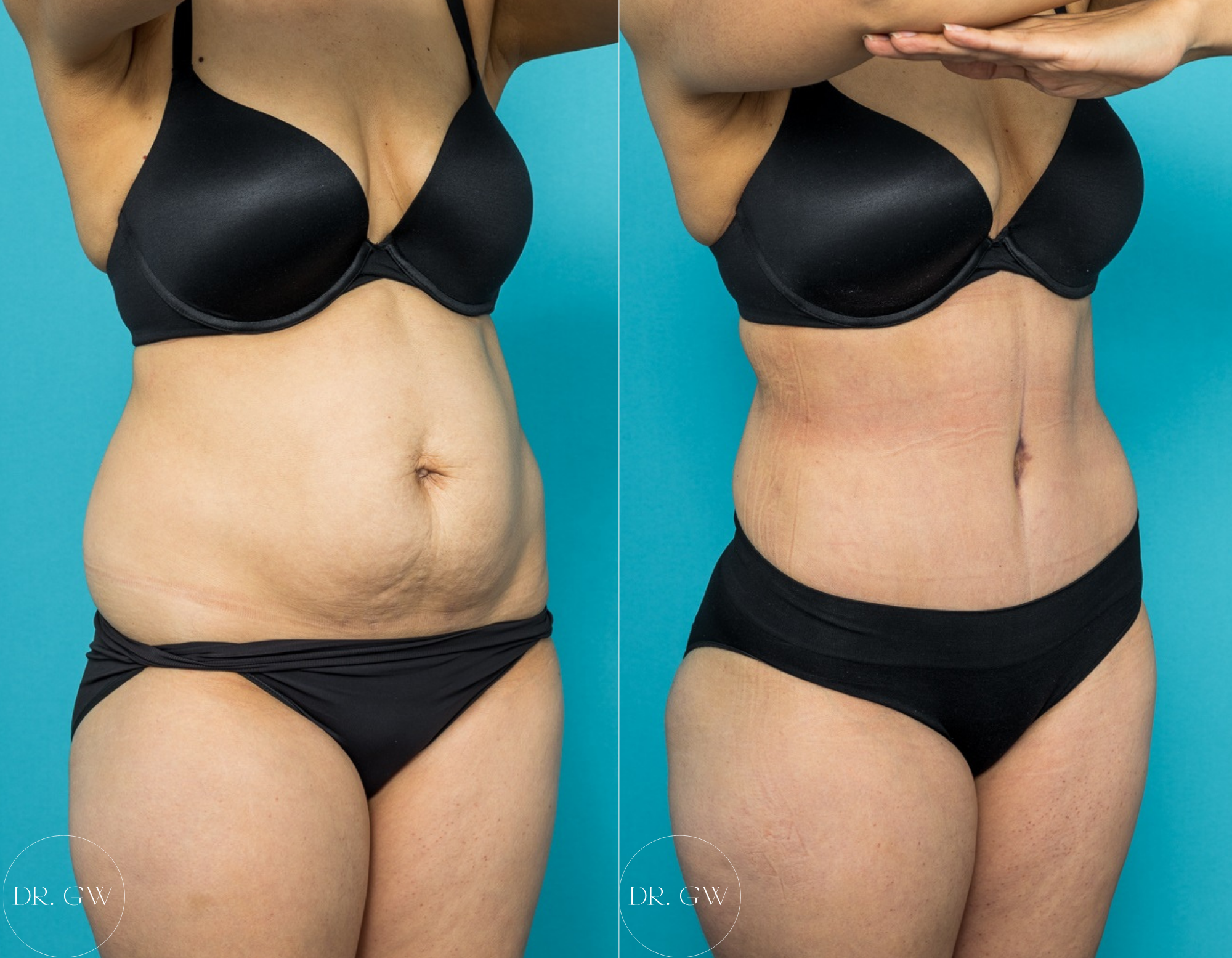
09 Aug How to Reduce Bruising and Swelling After Tummy Tuck (Abdominoplasty)
Abdominoplasty, often referred to as a tummy tuck, is a commonly performed surgical procedure to remove excess abdominal skin and strengthen underlying muscles, particularly in patients who have experienced significant weight changes or pregnancy. While it can enhance comfort, posture, and physical function, the postoperative journey includes some common side effects – most notably, bruising and swelling.
In this comprehensive guide, Dr. Guy Watts, Specialist Plastic & Reconstructive Surgeon based in Perth, Western Australia, outlines what patients should expect, why bruising occurs, and how they can actively assist in their own recovery by following evidence-informed postoperative protocols.
Take our quiz, and find out if you are ready for surgery
Why Does Bruising Occur After Abdominoplasty?
Bruising is a common and expected part of surgical recovery. It occurs when small blood vessels – called capillaries – are disrupted during the procedure. As blood leaks into the surrounding tissues, it causes visible discolouration, ranging from red and purple to green or yellow as healing progresses.
Key contributors include:
- Surgical dissection: During abdominoplasty, the skin is lifted from the underlying abdominal wall, and muscles may be tightened. This process unavoidably causes trauma to small vessels in the soft tissue layers, leading to bleeding beneath the skin.
- Individual patient factors: People vary in their propensity to bruise based on genetics, age, skin tone, and general health. Patients with thinner or fairer skin, or those who bruise easily from minor injuries, may experience more noticeable discolouration after surgery.
- Pre-existing health conditions: Conditions such as hypertension, clotting disorders, or anaemia can influence how the body responds to surgery and how quickly bruises resolve.
- Medications and supplements: Products that affect blood clotting – such as aspirin, anti-inflammatories, fish oil, ginkgo biloba, garlic tablets, and vitamin E – may prolong bleeding time and worsen bruising if not discontinued prior to surgery.
- Combination procedures: When liposuction is performed in addition to abdominoplasty, the manipulation of fatty tissue increases vascular trauma, often resulting in more extensive bruising.
At his Perth practice, Dr. Guy Watts uses refined, controlled techniques to limit unnecessary tissue damage and bleeding. However, all patients should be prepared for some degree of bruising as part of the normal healing process.
When Do Bruising and Swelling Peak?
✓ Timeline of Bruising
- First 72 hours: Initial bruising begins to appear, often mild at first but darkening over the next day or two. Bruising may be more pronounced around the lower abdomen, flanks, and groin area, where tissue manipulation is greatest.
- Day 4 – 7: Bruising typically peaks. Discolouration may appear darker and more widespread at this point. Some patients experience bruising that spreads or “travels” downward due to gravity.
- Week 2 onward: Bruising begins to fade, turning greenish or yellow before resolving. While most discolouration resolves within 2–3 weeks, mild traces can persist for up to 4 – 6 weeks, particularly in patients with slower healing.
✓ Timeline of Swelling
- Week 1: Swelling is most noticeable during the first week. It often presents as puffiness and tightness across the abdomen and can feel firm or tender to the touch.
- Week 2 – 4: Moderate swelling continues but begins to decrease. Some patients notice fluctuations throughout the day, often feeling more swollen in the morning or after extended activity.
- Weeks 6 – 12: Gradual resolution of swelling occurs. However, residual swelling, especially in the lower abdominal region above the incision line, may persist for several months.
- Beyond 3 months: In most cases, the majority of swelling has resolved. Subtle swelling may continue in the background for up to 6 – 12 months depending on the individual, the extent of surgery, and adherence to recovery protocols.
Regular postoperative check-ups at Dr. Watts’ clinic in Perth ensure healing is progressing appropriately and allow for early intervention if needed.
DOWNLOAD DR WATTS’ GUIDE TO ABDOMINOPLASTY
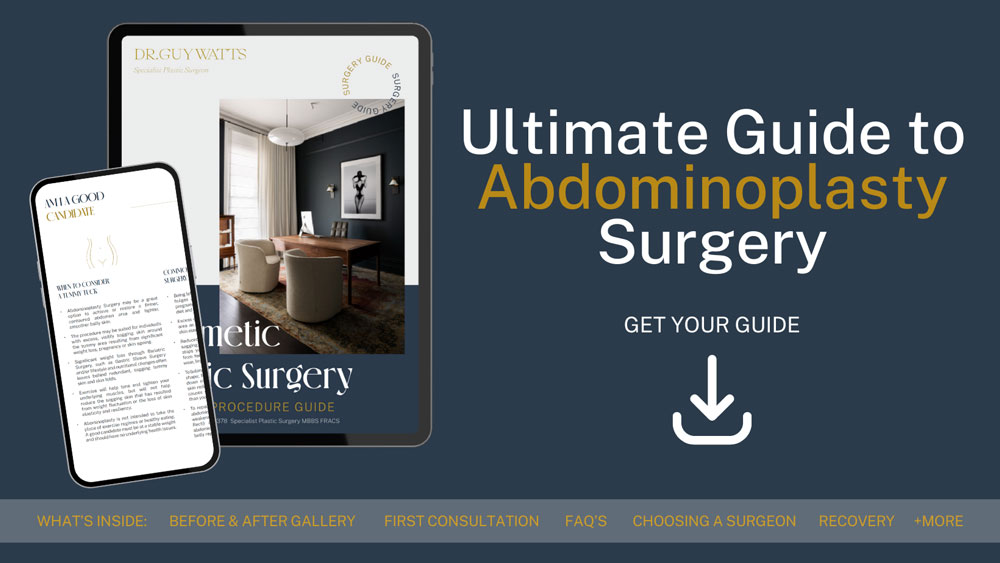
Evidence-Based Ways to Reduce Bruising and Swelling
Recovery involves both physiological healing and practical care. Below are proven strategies for minimising swelling and bruising after surgery, as recommended by Dr. Guy Watts.
-
Follow Your Personalised Recovery Plan
- Every patient receives a detailed set of post-surgical instructions from Dr. Watts, tailored to their specific anatomy, medical history, and the type of abdominoplasty performed.
- These plans may include wound care protocols, activity restrictions, compression guidance, medication regimens, and information on how and when to resume normal routines.
- Adherence to this plan is one of the most important steps in ensuring smooth, complication-free healing.
-
Wear Your Compression Garment Consistently
- Compression garments are custom-fitted and provided immediately after surgery. They are usually worn for 4–6 weeks, depending on the extent of surgery and how healing is progressing.
- The garment helps limit fluid accumulation (seroma), provides support to the abdominal tissues, and encourages proper skin retraction and contour.
- Patients should ensure the garment is not too tight or folded, as this can restrict blood flow or cause skin irritation. Instructions on cleaning and drying the garment are also provided to maintain hygiene and skin comfort.
-
Avoid Blood-Thinning Medications and Supplements
- In the weeks before surgery, patients are asked to avoid substances that interfere with clotting. These include not only prescription medications like warfarin or clopidogrel, but also common non-prescription agents.
- It’s essential to inform Dr. Watts of all medications, herbal remedies, and vitamins being taken, as some combinations may affect bleeding risk or interact with anaesthesia.
- Patients should only resume any anticoagulant medications after consulting with both Dr. Watts and their general practitioner or prescribing specialist.
-
Apply Cold Compresses in the First 48 Hours
- When used appropriately, cold therapy reduces the inflammatory response by slowing blood flow to the affected area.
- Cold compresses should only be applied in short intervals, wrapped in a clean cloth or towel. Apply for 15–20 minutes at a time with at least 30-minute breaks in between.
- Never place ice packs directly on the skin or over the incision line. Avoid prolonged exposure, which may result in skin damage or interfere with blood circulation.
-
Elevate and Rest the Body
- Rest is vital in the early days following surgery. Elevation supports venous and lymphatic drainage, helping to reduce pooling of fluids.
- Patients are advised to sleep in a slightly reclined position, either in a recliner or propped up with pillows. This posture reduces pressure on the abdominal area and prevents excessive tension on incisions.
- Bending slightly at the waist when walking or standing upright for the first week may be recommended to protect the tightened muscle repair.
-
Gentle Movement Enhances Circulation
- Early ambulation helps prevent postoperative complications like deep vein thrombosis (DVT) and aids in lymphatic drainage.
- Patients are encouraged to begin light walking – such as to and from the bathroom – within 24 hours post-surgery, as tolerated.
- Over time, short walks around the house and light activities can be gradually reintroduced, always within the boundaries set by Dr. Watts during follow-up consultations.
-
Avoid Smoking and Alcohol
- Smoking reduces oxygen delivery to tissues, slows healing, and significantly increases the risk of wound breakdown and infection.
- Alcohol can lead to dehydration, impair immune function, and interact with pain medications or antibiotics.
- Patients should cease smoking at least four weeks prior to surgery and continue to abstain for a minimum of four weeks postoperatively. Alcohol should be avoided for the first 2–3 weeks or until cleared by Dr. Watts.
Signs That May Need Medical Attention
While bruising and swelling are typical, patients should be aware of warning signs that may indicate an issue requiring further assessment. These include:
- Rapid or expanding bruising, especially if it becomes hard, swollen, or painful. This could indicate a haematoma – a collection of blood under the skin that may require drainage.
- Increasing pain, particularly if it localises to one area or interferes with movement and sleep.
- Redness, warmth, or discharge around incision sites, which may signal infection.
- Fever or chills, which may also accompany infection or systemic inflammation.
- Sudden swelling in one leg, chest pain, or shortness of breath, which could be signs of a blood clot or embolism and require emergency care.
Any of these symptoms should prompt an immediate call to Dr. Guy Watts’ Perth clinic or the nearest emergency department.
Recovery in Perth’s Climate: Key Considerations
Patients in Western Australia, particularly during warmer months, may need to take specific environmental precautions during recovery:
- Hydration: Perth’s dry heat increases fluid loss. Drink plenty of water to support tissue healing and reduce fluid retention.
- Temperature control: Avoid direct sun exposure and high temperatures. Heat can exacerbate swelling and delay recovery.
- Clothing: Wear loose, breathable garments over compression wear to prevent skin irritation and overheating.
- Rest periods: During hotter days, plan rest breaks in air-conditioned environments and limit time outdoors.
Dr. Watts provides season-specific guidance based on your surgery date and projected climate conditions.
Dr. Guy Watts’ Individualised Approach in Perth
As a Specialist Plastic & Reconstructive Surgeon, Dr. Guy Watts is known for his precise technique, ethical standards, and patient-centred care. His practice in Perth is built around these core values:
- Individualised surgical planning: Every procedure is designed based on the patient’s goals, anatomy, and health background.
- Comprehensive education: From initial consultation to final follow-up, patients receive detailed, transparent explanations of each step.
- Professional support network: A dedicated team ensures patients feel supported at every stage of their surgical experience, with access to both medical and administrative guidance.
FAQs about Bruising and Swelling after Tummy Tuck – Abdominoplasty Surgery
Planning for Surgery? Speak with Dr. Guy Watts in Perth
Understanding how to manage bruising and swelling after abdominoplasty is an important part of preparing for surgery. While these effects are temporary, they can influence your comfort, mobility, and overall recovery experience. With accurate guidance and consistent care, many patients are able to support their body’s natural healing process and return to their routines at a steady, manageable pace.
If you are considering abdominoplasty and would like to learn more about what to expect before and after surgery, Dr. Guy Watts, Specialist Plastic & Reconstructive Surgeon, offers comprehensive consultations at his practice in Perth, Western Australia. During your consultation, Dr. Watts will provide detailed information about the procedure, address any personal concerns, and develop a customised surgical and recovery plan based on your individual needs and health history.
To schedule an appointment or enquire further, or contact the clinic directly to speak with Dr. Watts’ experienced team.
Further Reading
- Read more about Guy Watts’ blog on 10 Options to Help Reduce Bruising After Post Pregnancy Surgery
- Read more about Guy Watts’ blog on Benefits of Wearing Compression Garments after Tummy Tuck – Abdominoplasty
About Dr. Guy Watts – MED0001539378
FRACS (Plas) – Specialist Plastic Surgeon In Perth WA
Dr. Guy Watts is a Specialist Plastic Surgeon (AHPRA MED0001539378) with an extensive career that spans across renowned plastic surgery clinics worldwide. His experience has been honed through invaluable experiences at esteemed establishments such as the New York Eye and Ear Infirmary and the renowned Pitanguy Clinic in Brazil.
Having collaborated with the foremost cosmetic plastic surgeons on a global scale, Dr. Watts has chosen to return to Perth after a 17-year journey of intensive training and invaluable professional experience to bring the latest practices and technology in cosmetic plastic surgery to his patients.
Dr. Watts is a Fellow of the Royal Australasian College of Surgeons (FRACS) and a Member of the Australian Society of Plastic Surgeons (ASPS), Australasian Society of Aesthetic Plastic Surgeons (ASAPS) and the International Society of Aesthetic Plastic Surgeons (ISAPS).
Read about the potential Risks and Complications of Surgery
Read the Patient Information and Resources
About CLINISPA
Clinispa is Dr Watts’ bespoke medical clinic performing Cosmetic Aesthetic treatments. At Clinispa, we offer advanced clinical treatments in a luxurious and calming environment, tailored to support your skin’s health and appearance.
Clinispa aesthetic services are performed by Dr Guy Watts’ nursing professionals, who have a passion for and solid understanding of facial aesthetics.
All Clinispa clients are considered individually, with a personalised treatment plan consisting of advanced scientific approaches to cosmetic aesthetics. We incorporate innovative technologies in conjunction with superiorly formulated skin care.
For more information about the full range of Clinispa Aesthetic of Cosmetic Treatments visit the Clinispa website







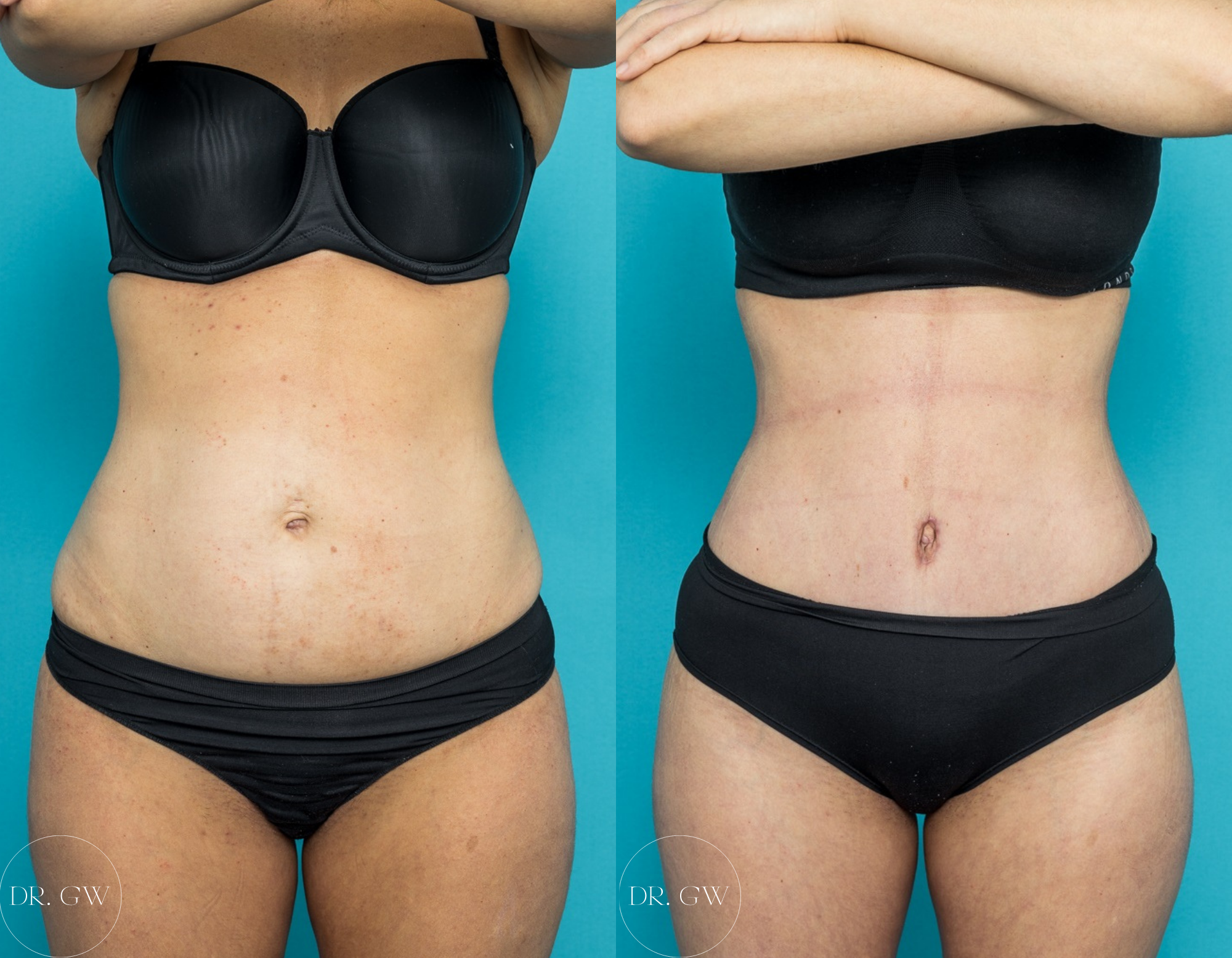
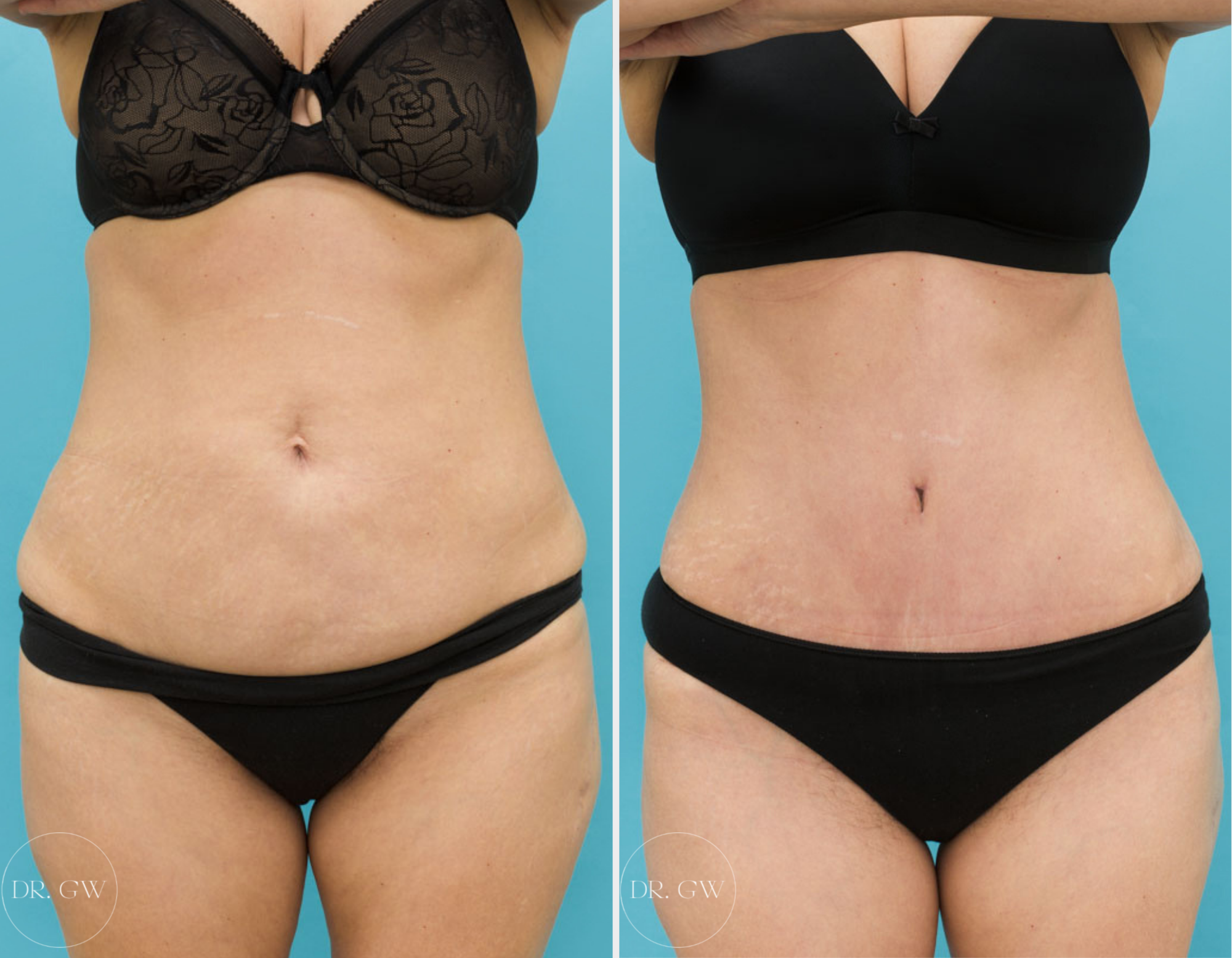
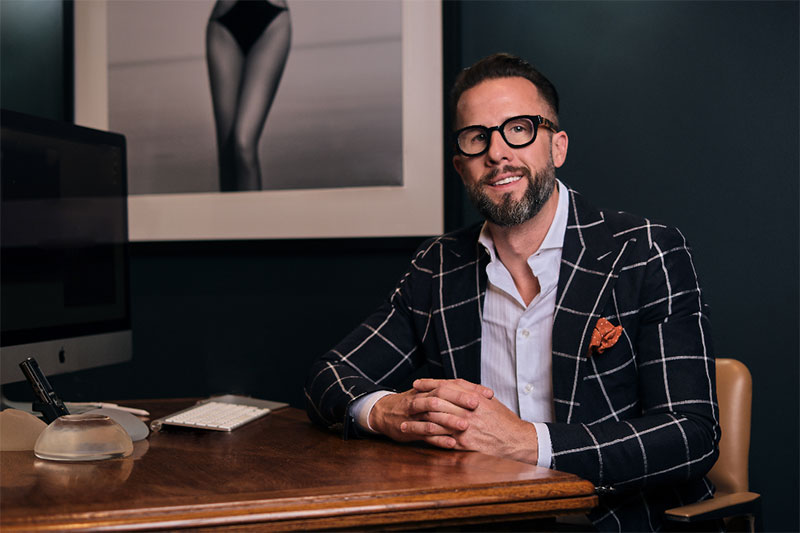
Sorry, the comment form is closed at this time.